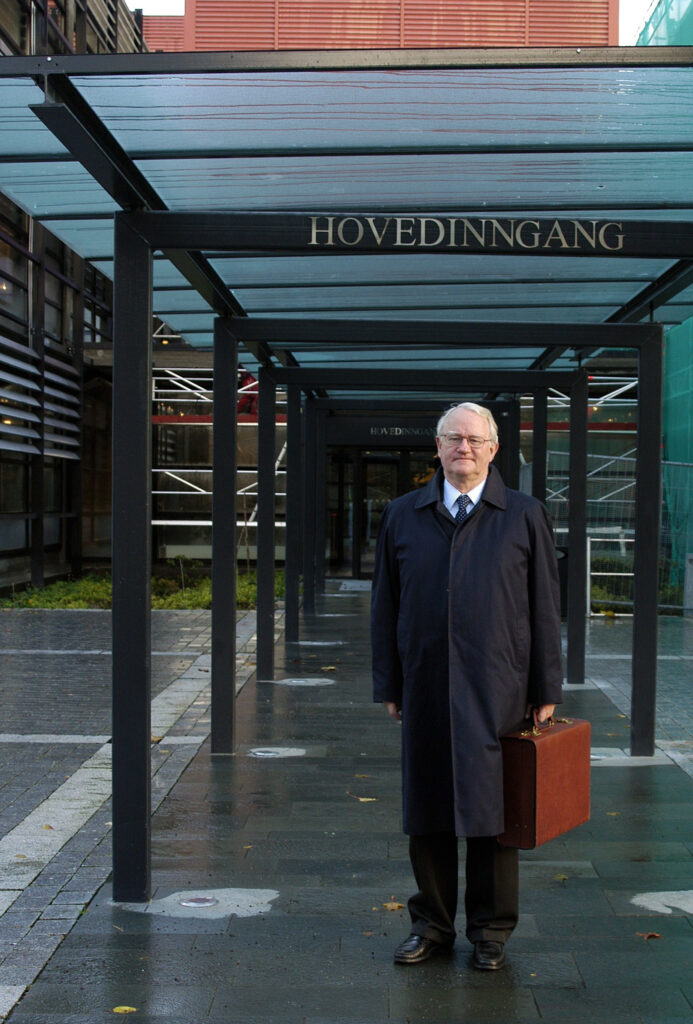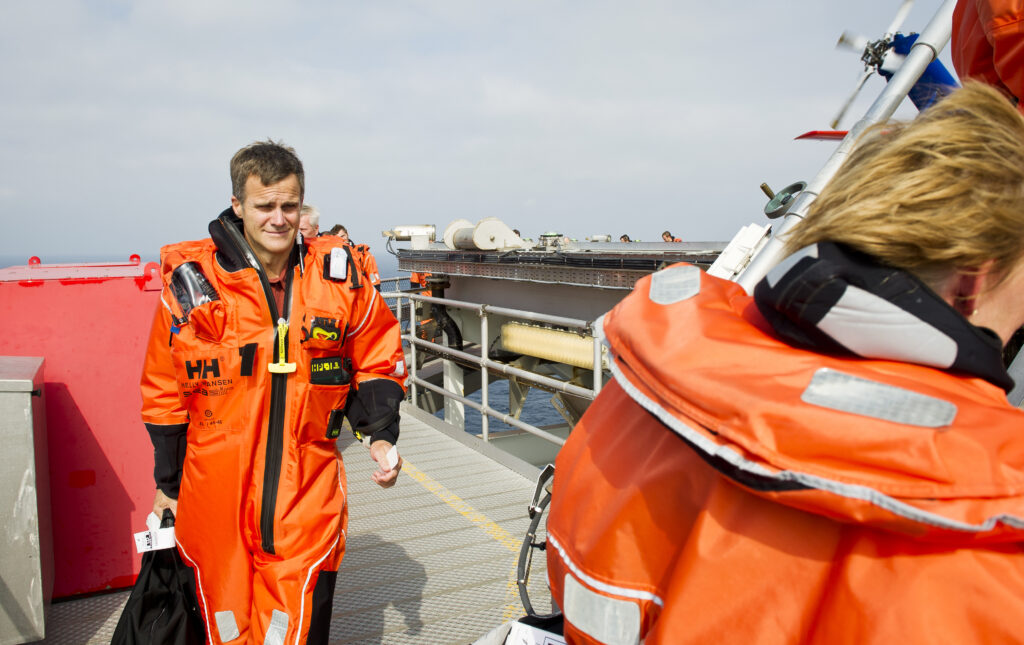Helge Lund – background and appointment

Born in 1962 in Asker outside Oslo, Lund’s background had several features in common with his predecessors at Statoil. He studied at the Norwegian School of Economics, like Arve Johnsen, Harald Norvik and Fjell, and had some experience of politics as did Johnsen and Norvik. The latter pair had both had political careers in the Labour Party, including posts as state secretaries (junior ministers). Lund had been the secretary of the Conservative Party group in the Storting (parliament), and thereby represented something of a broadening in the political background of Statoil CEOs.[REMOVE]Fotnote: Sandø, Toralf, “Fra Asker til ilden”, Pluss-magasinet, Stavanger Aftenblad, 19 March 2004: 22-24.
He worked in the 1990s for the McKinsey consultancy and the Nycomed Pharma pharmaceutical company. At the end of the decade, he joined the Aker RGI industrial group and became CEO of Aker Kværner in 2002. This company had been created from a merger of the Aker and Kværner groups, where Lund had played a key role.
Recruitment
With this experience, Lund became a rising star in the Norwegian business firmament. So it is hardly surprising that he joined the field at an early stage in the race to succeed Fjell. The recruitment process was led by chair Jannik Lindbæk – a key task which faced him when he joined the board on 1 November 2003.[REMOVE]Fotnote: Annual report, 2003, Statoil: 62. (References to annual reports in this text refer to the Norwegian edition of the reports.) Consultancy and headhunter Egon Zehnder was also engaged in the work.
The months passed, and many waited with great anticipation and growing impatience for the outcome of the process. Under the headline “When is the boss coming?”, one commentator wrote after listing potential candidates for the job:
All the signs are that Statoil headhunter Egon Zehnder has spread its net widely in order to catch all relevant variants. And not least to pick up by-products – candidates for the reshuffling of Statoil’s top management which will very probably follow when a new CEO is in place. In the none too distant future.[REMOVE]Fotnote: Rosenberg, Ulf-E., “Når kommer sjefen?”, Stavanger Aftenblad, 10 February 2004: 8.

At that point, it was nevertheless difficult to envisage that the CEO job itself would form part of a reshuffle – with another company involved.
Appointment with complications
In early March 2004, it became clear that Lund would be appointed as the new CEO.[REMOVE]Fotnote: Annual report, 2004, Statoil: 60. This news had a positive reception in most quarters, but the further process was not without complications.
Aker Kværner was a big supplier to the oil industry – and Statoil ranked as its largest customer. The close association between these companies activated a competition clause which required a quarantine time.[REMOVE]Fotnote: Boon, Marten, 2022, En nasjonal kjempe. Statoil og Equinor etter 2001. Universitetsforlaget: 109. Lund was therefore unable to take up his new post until 15 August that year.
In the meantime, Inge K. Hansen, who had been Statoil’s acting CEO since September 2003, accepted an offer from Aker Kværner owner Kjell Inge Røkke to take over after Lund. He was also subject to initial restrictions in this role. That related to the Snøhvit and Kristin projects being pursued by Aker Kværner for Statoil.[REMOVE]Fotnote: Rosenberg, Ulf-E., “Rører ikke Snøhvit og Kristin før august”, Stavanger Aftenblad, 9 March 2004: 2.
With Hansen leaving, Statoil needed a new acting CEO before Lund was in place. That role was taken by Erling Øverland, who had previously headed the company’s processing and marketing business.
Preparations
Lund utilised the time up to 15 August to become familiar with the company. In particular, he had extensive contacts with CFO Eldar Sætre, who had been with Statoil for more than 20 years.[REMOVE]Fotnote: Boon, Marten, op.cit: 124.
This preparatory phase was important for developing Lund’s view of the company’s growth requirements. When he was ready for his first operational day as CEO, it marked the start of a 10-year spell in the boss’s chair with a strong commitment to international growth.

